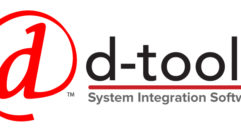
Tools for Corporate Video Asset Management, Part 2
Oct 9, 2008 10:20 AM,
By Jessaca Gutierrez
Related Articles
Tools for Corporate Video Asset Management, Part 1

Consumer consumption of video content had to come first before the corporate world could grasp what it could mean for the professional market. As the consumer content creation and consumption market has exploded, it has driven the pro side to action. Manufacturers are toying and tooling products on the pro side to address video needs there. Content creation isn’t new to the pro side by any means, considering Presenter for ForeThought released version 1.0 of PowerPoint in 1987. This created what was just the beginning of the professional presentation media. From there, business content creation has morphed into videoconferencing, webcasting, and other internal and external video products. What is new, however, is the development of a professional infrastructure to handle the mass. Corporations are beginning to brainstorm what their video infrastructure and workflow needs are, which is no easy task when no two corporations may have the same need, leading to many custom solutions.
“The market of video in the professional/business environment is still in its early stages,” says streaming media developer Vividas’ CEO Iain Molland. “The demand and opportunity for professional video is still evolving and developing. Furthermore, the drivers for the ultimate market are commercial, and the commercial models are still being worked out. I would say the major change from over a year ago is that the market has some direction, and general business following is being established. Still, there is no precise model being adopted, but generally, businesses are developing businesses around advertising, sponsorship, pay-per-view, or a combination of all three. As these models take shape and gather momentum, the market will continue to develop, and more importantly, the advertising, sponsorship revenues, and business revenues will continue to fund the market.”
At Norris Design, a planning and architecture firm that was started in Denver and now has offices in Chicago; Frisco, Colo.; Phoenix; and Tucson, Ariz., client presentation has played a central role in the company’s business. Norris Design’s content ranges from print media to PowerPoint presentations, and now even video. Within the last two years, the company has grown its video media. “Over the last 10 years, video has been utilized on an as-needed basis when specific projects require a relevant video application. Within the last 2 years, we have recognized that video and motion graphics will play a larger role in the type of presentation and documentation work we will be doing in the future,” says Sean Malone, principal at Norris Design. “With the expansion of our company to other cities and states, we have also found that recording company meetings and internal presentations for the other offices has been a way to maintain a cultural connection across the company.”
Norris began its video career, the company shot with a Hi8 camera and used a high-end workstation for editing, but as it number of video projects increased and better resolution was needed, the company started shooting on a Canon GL1 MiniDV camera. “Around two years ago, we started developing animation graphics using [Autodesk] 3ds Max and Adobe Premier and After Effects,” he says. “The quality and effectiveness of the resulting work resulted in an increased demand for these services. Recognizing that we could differentiate our firm from the competition with these new capabilities, we committed more resources and infrastructure to our efforts. We now have a Canon HX A1 for video recording, four 3D animators, and a dedicated motion graphics/video editing member on our staff. They all work off custom-built quad-core workstations with an 80 processor render farm.”
Tools for Corporate Video Asset Management, Part 2
Oct 9, 2008 10:20 AM,
By Jessaca Gutierrez
At Norris Designs, storage is just now coming to the forefront as they’ve grown its number of video assets that require a more sophisticated archiving system. “We recently restructured the company’s data storage and redundancy systems for all our typical data files,” Malone says. “Our next project is to develop a true server-based storage and redundancy system for our video and motion graphics.”
Molland says although the corporate video market is in its early stages of development, there’s plenty of momentum to propel the demand for a larger supply of tools forward. Vividas recently announced its new product, VivStream, which addresses the not only the infrastructure (or lack thereof) that businesses are seeking, but also the demand for HD. VivStream is an IP video platform for corporate videos that provides restriction-free delivery across corporate networks, firewalls, and virus-checking systems.
“We have simplified the video delivery process while increasing the quality of the video,” Molland says. “The result is that we can deliver video to PCs and Macs across browsers; and in addition, we are able to ensure the content can be delivered across a range of bandwidth connections. This ensures that businesses are guaranteed that they can distribute their messages to clients and employees across geographies.
“As businesses continue to develop their online business models, the quality of the viewing experiences and the delivery method become much more important. Audiences are paying for content online whether it’s sporting, films, etc., while they are also looking for and demanding quality. Vividas’ technology not only allows you to stream to the computer, but it will allow you to connect to a plasma, an LCD, or other viewing screens. The quality of the picture is unmatched and will scale as the connectivity increases, which is another reason why quality is important. On the corporate side, we are seeing continuing pressures to achieve business performance and clearly corporate communications is a key component. Our technology delivers a way to provide both live and video communications to employees and clients.
With the Internet a sure component available to all businesses now, Vividas doesn’t require any additional infrastructure. The only component the business will need to invest in is bandwidth, Molland says.
Advanced Media Design’s MediaPointe Ensemble is another product using the strength of IP to create a video platform for businesses. Gareth Wade, VP of sales and marketing, strikes a very familiar chord when describing the product, calling it the YouTube for businesses. “The proliferation of broadband technologies over the past 18 months, along with organizations recognizing that distributed and shared video is a powerful tool, means that the potential audience has grown exponentially,” Wade says. “The creation and production of video is more than often decentralized, created by many different edge-based sources and media servers using a variety of formats. MediaPointe Ensemble simply enables organizations to have an easy-to-use management and sharing system, which integrates easily with a wide range of media capture devices, including our own MediaPointe DMRs. Store and manage all of your audio and video content in one place.”
Looking Forward
Where is video headed in the corporate realm? The only place is toward more sophisticated, saavy systems that tie in with either their already existing AV system for seamless control, or a brand-new build-out to meet any of the business’ needs while still maintaining the economical balance. Afterall, although video may be a prime stepping stone toward the growth of the company in terms of marketing, advertising, and communication, they’re not a production house looking to create the next blockbuster.
“We are starting to see video become increasingly common as a way for companies to convey ideas and effectively market themselves,” Malone says. “As computing horse power, stable and intuitive software, and faster data streaming becomes more economical, the corporate marketplace will absorb it as just another communication device. I believe it is the next step in the communication evolution for day to day business. From the B2B perspective, the facsimile became the first quick way to communicate visually, then email, and now video. For B2C, corporations are starting to see how they can more effectively communicate with the public through utilizing video.
“I see becoming mainstream without most people even noticing. Companies who are now recognizing the value of video usage for business will have a short-term advantage. As our daily lives become more immersed and dependent on video (personal video cams, YouTube-type websites, etc.), business will naturally start utilizing it. Younger professionals have grown up in a video world. As with every generation, they will bring their life experience to the workplace. That experience involves communicating via video. I think in the future, businesses that provide video-based products will need to continue to focus on the creative content and quality of the production. We are making efforts here at Norris Design to improve our offerings, so we can remain a few steps ahead of our competitors.”
“As broadband technologies gain greater traction globally as costs fall, coupled with the ever increasing availability of simple to use video technologies the shift will be in ways businesses start thinking about how to leverage the technology already in place,” Wade says. “We are already seeing wider, rapid adoption of videoconferencing and telepresence across all market sectors; more and more users are now asking the question of ‘What next?’ How can they capture their meetings, presentations, lectures, and training sessions and then share them easily for the greater benefit of all?”










